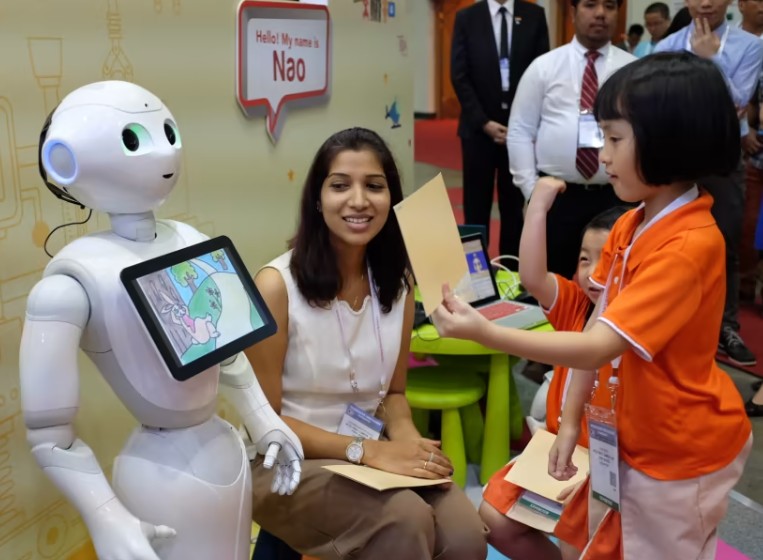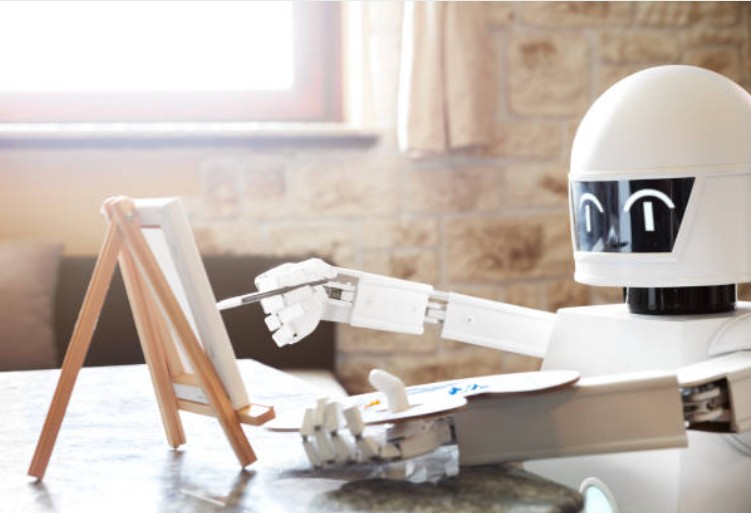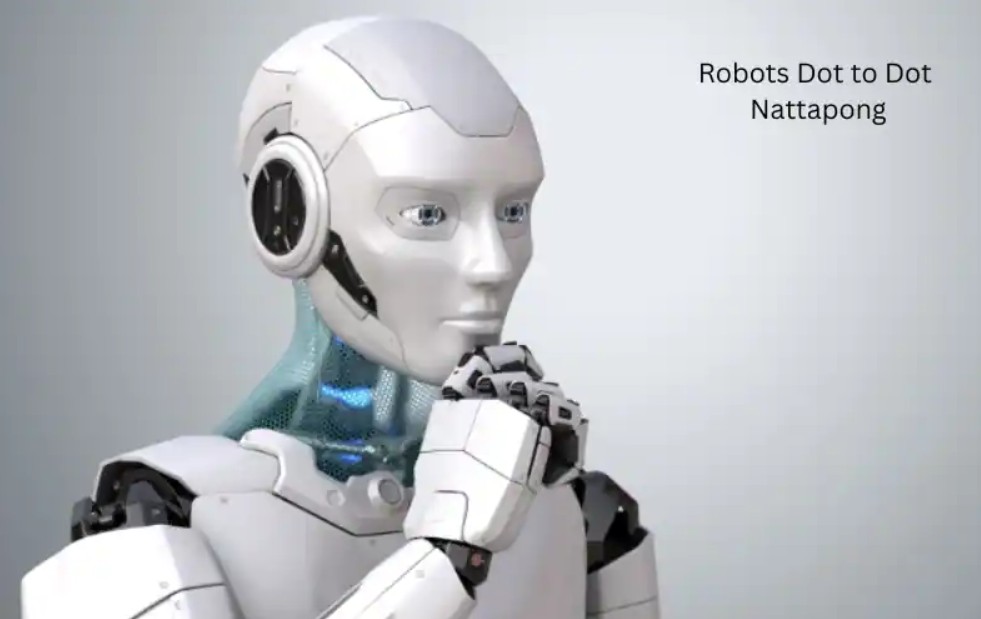What Is ‘Robots Dot to Dot Nattapong’?
A Creative Evolution Where Machines Become Artists
Technology has significantly transformed how we experience and interact with art in recent times. Among the most captivating developments is Robots Dot to Dot Nattapong, a unique fusion of robotics and artistic creativity that’s taking the world by storm, especially in the UK.
Created by Nattapong, a Thai visionary who merges engineering with art, this concept revolves around a robot designed to connect dots on a canvas to form intricate works of art. Unlike traditional dot-to-dot puzzles, where the dots are manually connected by the participant, Nattapong’s robots bring these dots to life, creating a digitalized, precise, and aesthetically intriguing drawing through robotic precision.
At its core, this art form redefines what it means to be an artist and challenges the boundaries between machine autonomy and human creativity. The concept is revolutionary, and it is capturing the imagination of many, particularly in the UK’s vibrant tech and arts communities.
How Robots Dot to Dot Nattapong Works: The Art of Automated Drawing

From Circuitry to Creativity: The Technical Genius Behind the Masterpieces
So, how exactly does this fusion of art and technology work? The process behind Robots Dot to Dot Nattapong is intricate and fascinating, transforming a mechanical arm into a digital artist capable of creating complex designs.
Let’s break down the steps involved in the process for a clearer understanding.
Step-by-Step Breakdown of the Drawing Process
- Designing the Concept
Before the robot gets to work, the artist or designer comes up with an image, theme, or concept. It could be anything from abstract shapes to realistic portraits, landscapes, or even animated scenes. - Creating the Dot Map
After finalizing the design, the image is transformed into a grid of numbered points. These dots essentially represent the coordinates that the robot will follow. As the number of dots increases, the resulting image becomes more intricate and detailed. - Programming the Robot
Once the dot map is created, the next step is to program the robot. Using software like Arduino, Python, or custom algorithms, the robot is instructed on how to move across the canvas, connecting each dot in the correct order. - Execution
The robot, equipped with a stylus or pen, starts drawing, following the precise instructions it’s been given. Each movement is calculated, from the speed at which the arm moves to the pressure applied by the pen, ensuring a consistent line quality throughout the piece. - Human Touch
Although the robot does the heavy lifting, human intervention may still be needed for adding colour, shading, or enhancements to the piece. This combination of human creativity and robotic precision is what makes Robots Dot to Dot Nattapong such a unique art form.
This process brings together the technicalities of coding and the aesthetic intricacies of art, challenging the perception of what is traditionally human-made. The machine is not a replacement for the artist — it’s a tool, a collaborator that turns the artist’s vision into a reality.
The Growing Appeal of Robots Dot to Dot Nattapong in the UK
Why the UK is Embracing this Robotic Art Revolution?
The United Kingdom has consistently stood at the forefront of pioneering technology and imaginative creativity. The rise of Robots Dot to Dot Nattapong has found fertile ground in this cultural ecosystem. The blend of digital technology, artistic integrity, and mechanical ingenuity resonates deeply with the British public, particularly as the UK embraces a broader, more inclusive approach to creative technology.
Key Reasons Why the UK is Embracing Robots Dot to Dot Nattapong?
- A Shift to STEAM Education: UK schools and universities have been shifting from STEM (Science, Technology, Engineering, and Math) to STEAM (adding Arts). This transition has encouraged a greater synergy between technology and creative disciplines.
- Digital Art Scene: Cities like London and Manchester are global hubs for digital art, attracting creators who experiment with new forms of art, from AI-generated paintings to interactive installations. Nattapong’s Robots Dot to Dot seamlessly blends creativity with robotics, offering a unique fusion of technology and art.
- Public Engagement: The UK has seen a rise in interactive public art installations. Robots that generate art live are increasingly being showcased at galleries and public events, drawing crowds and sparking interest in the intersection of tech and art.
- Support for Innovation: The UK government and private investors are keen to support tech-driven artistic ventures, offering funding and platforms for emerging artists. Robotics and digital art are no longer just for tech companies; they are increasingly seen as legitimate artistic practices.
A Tool for Learning and Creativity: The Educational Potential of Robots Dot to Dot Nattapong

Bridging the Gap Between Art and Technology in the Classroom
A key highlight of Robots Dot to Dot Nattapong is its ability to provide valuable educational opportunities. It serves as a gateway for students of all ages to engage with both robotics and art in a way that’s fun, hands-on, and practical.
Key Educational Benefits:
- Developing Coding Skills
By programming a robot to create art, students get a tangible understanding of how coding can influence the world around them. This experiential learning enhances their interest in STEM subjects. - Fostering Creative Problem-Solving
Students must think creatively to map out the design and solve the logistical problems of how a robot can turn abstract instructions into an artwork. This fosters both critical thinking and innovation. - Encouraging Interdisciplinary Learning
Robots Dot to Dot Nattapong blurs the lines between science and art, encouraging students to think outside traditional subject boundaries. It’s an effective way to inspire a holistic education that blends technical and artistic skills.
Exploring Robots Dot to Dot Nattapong Across Industries
How This Innovative Art Form is Crossing Boundaries?
While this creative fusion of art and robotics began as an artistic endeavour, it is rapidly gaining traction across various industries.
Industry Applications:
| Sector | Use Case Example |
|---|---|
| Education | Robotics workshops for students to learn coding and art simultaneously |
| Museums & Exhibitions | Live robot art performances at tech and art exhibitions |
| Advertising & Branding | Engaging exhibits designed for product unveilings and industry events. |
| Healthcare | Therapeutic robot art for mindfulness and stress relief in therapy settings |
| Design & Manufacturing | Robot-created designs used in product prototypes and fashion collections |
In each case, Robots Dot to Dot Nattapong serves as a tool for innovation, creating new ways of engaging customers, students, and audiences while promoting the use of cutting-edge technology in creative fields.
Building Your Own Dot-to-Dot Robot: A DIY Guide
Creating Robotic Art at Home or in the Classroom

If you’re feeling inspired and want to dive into the world of robotic art, building your own dot-to-dot robot is surprisingly affordable and accessible. With a few basic components, you can create your own robotic artist at home or in a classroom setting.
Equipment and Costs:
| Item | Approximate Cost (GBP) |
|---|---|
| Arduino Uno or Raspberry Pi | £25 – £35 |
| Servo Motors or Stepper Motors | £15 – £30 |
| Drawing Arm or Frame | £20 – £40 |
| Pen & Paper / Canvas | £10 |
| Open-Source Software | Free |
Total cost for setup: Around £70 – £100, which is a reasonable investment for creating a new educational or creative project. With online resources and tutorials, anyone can get started with this exciting tech-art venture.
Final Thoughts: Where Does Robot’s Dot to Dot Nattapong Fit Into the Future of Art?
As Robots Dot to Dot Nattapong gains increasing attention, it signals a thrilling evolution where creativity and technology seamlessly come together. The UK, with its rich history of artistic innovation and technological leadership, is the ideal place for this concept to take root and flourish.
This art form challenges traditional ideas of creativity, inviting both tech enthusiasts and artists to collaborate in creating something truly unique. Whether in classrooms, galleries, or public spaces, Robots Dot to Dot Nattapong is reshaping the future of interactive art, opening doors to new possibilities where human intuition meets robotic precision.
Answering Your Burning Questions About Robots Dot to Dot Nattapong
How difficult is it to create artwork using a robot?
While it requires basic coding knowledge, there are many tutorials and pre-made kits that make the process easy to understand, even for beginners.
Are robots replacing human artists?
Not at all. Robots are tools, not creators. They work under human guidance, helping artists execute their vision with incredible precision.
How can I see Robots Dot to Dot Nattapong in action?
Look out for exhibitions at museums like the Science Museum in London, London Tech Week, and other digital art festivals. You can also visit interactive installations in galleries around the UK.

Leave a Reply